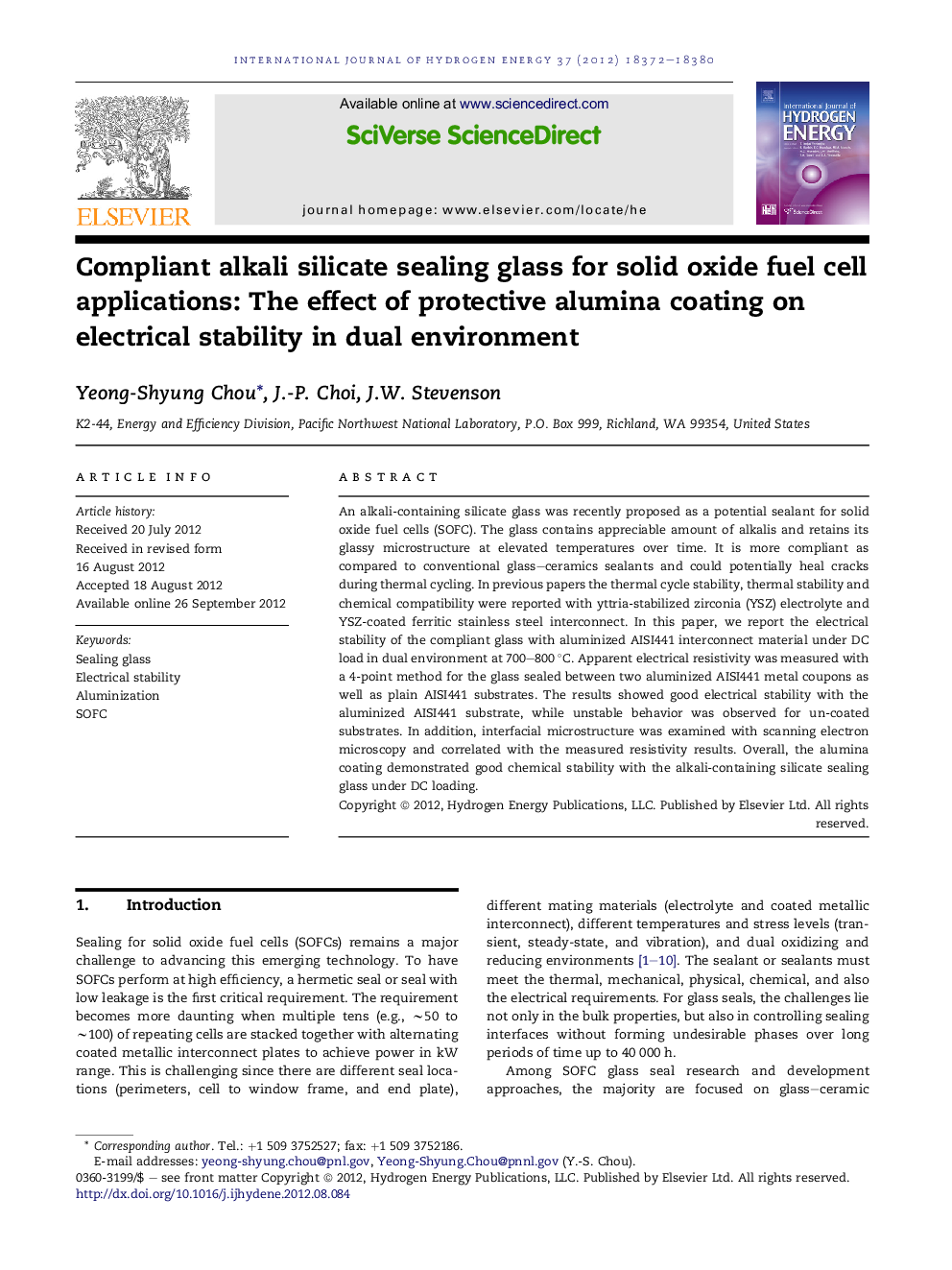| Article ID | Journal | Published Year | Pages | File Type |
|---|---|---|---|---|
| 1278354 | International Journal of Hydrogen Energy | 2012 | 9 Pages |
An alkali-containing silicate glass was recently proposed as a potential sealant for solid oxide fuel cells (SOFC). The glass contains appreciable amount of alkalis and retains its glassy microstructure at elevated temperatures over time. It is more compliant as compared to conventional glass–ceramics sealants and could potentially heal cracks during thermal cycling. In previous papers the thermal cycle stability, thermal stability and chemical compatibility were reported with yttria-stabilized zirconia (YSZ) electrolyte and YSZ-coated ferritic stainless steel interconnect. In this paper, we report the electrical stability of the compliant glass with aluminized AISI441 interconnect material under DC load in dual environment at 700–800 °C. Apparent electrical resistivity was measured with a 4-point method for the glass sealed between two aluminized AISI441 metal coupons as well as plain AISI441 substrates. The results showed good electrical stability with the aluminized AISI441 substrate, while unstable behavior was observed for un-coated substrates. In addition, interfacial microstructure was examined with scanning electron microscopy and correlated with the measured resistivity results. Overall, the alumina coating demonstrated good chemical stability with the alkali-containing silicate sealing glass under DC loading.
► Compliant glass was evaluated in electrical stability at 700–800 °C. ► The glass showed constant resistivity with aluminized AISI441 interconnect. ► Microstructure analysis showed minimum interfacial.
